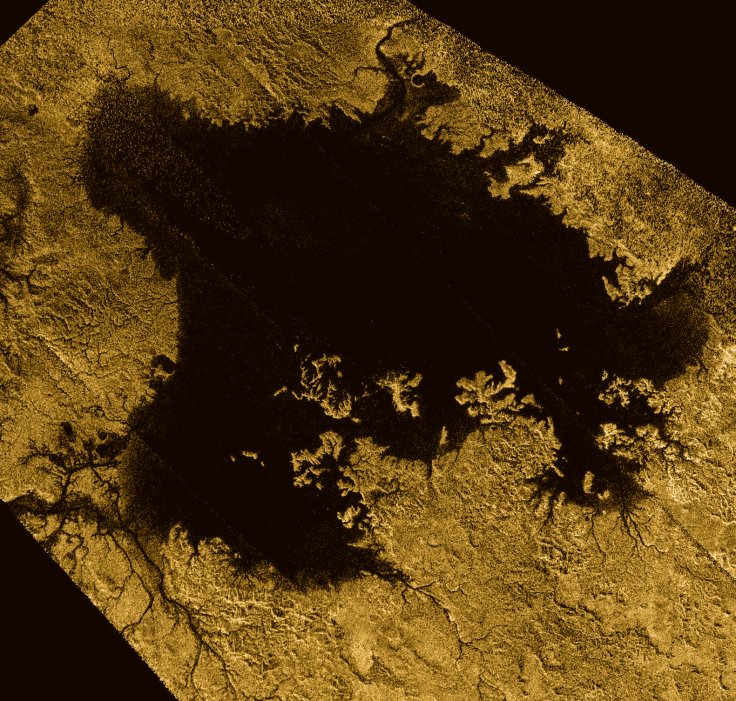
Studies based on data from NASA's Cassini mission have revealed that Saturn's moon Titan shows elevation in sea level similar to Earth. The moon's sea shows an average elevation of several meters above the normal sea level.
The research found similarities between Earth and Titan which are believed to be the only places in the solar system to have the existence of liquids on its surface. Titan has hydrocarbon seas and lakes, and water ice is formed in layers above the solid organic material bedrock surrounding the water bodies.
The research by the Cornell University in New York, USA found that Titan seas follow regular elevations due the moon's gravitational pull similar to Earth's oceans. Smaller lakes on Titan are believed to form elevations to several hundred feet, or meters, above its sea level. Earthly lakes also follow similar high elevations which offer easier navigation for large ships. Lake Titicaca rise to over 12,000 feet or 3,700 meters above the sea level helping the highest lake navigation by large ships.
Scientists believe that Titan sea elevations are resulted by connections between different hydrocarbon bodies. The liquid flow follows patterns similar to aquifer system on Earth. The hydrocarbons appear to flow underneath the moon's surface and flow through underground porous rock or gravel as in Earth. Nearby lakes could communicate through these channels and share common liquid levels.
Cassini's radar instrument had captured the image data for the research months before its final plunge into Saturn's atmosphere on September 15, 2017. NASA had ended the Cassini mission as the probe ran out of fuel. The space agency feared that the probe might collide with any Saturn moons which could disrupt the delicate environment in them.
NASA believes in the possibility of life in undersurface oceans of Saturn moon Enceladus. Cassini mission has identified the presence of tectonic activities in the moon which results in active underwater oceans which could support life.








